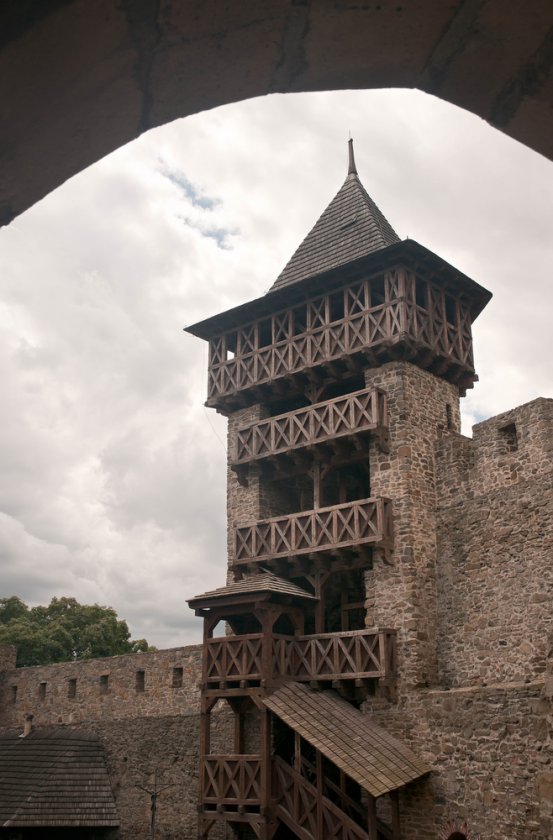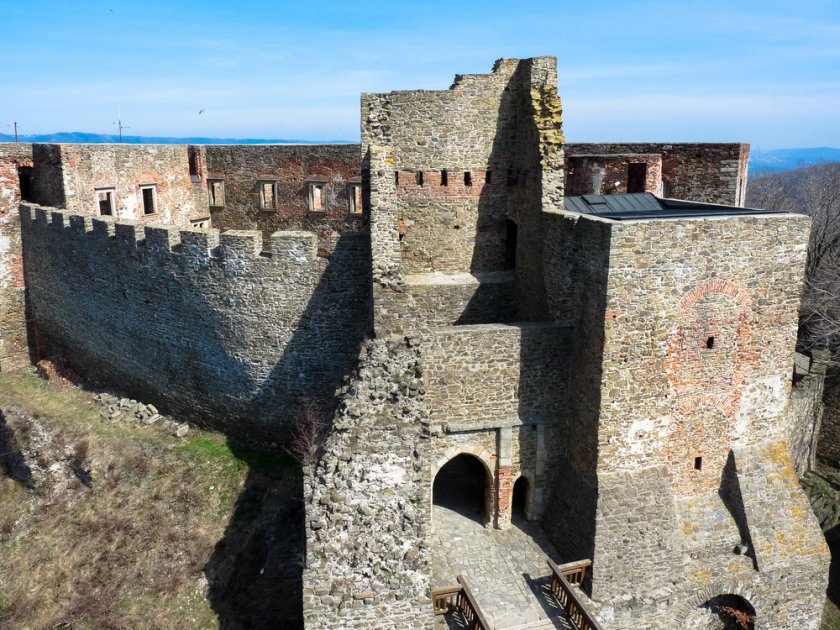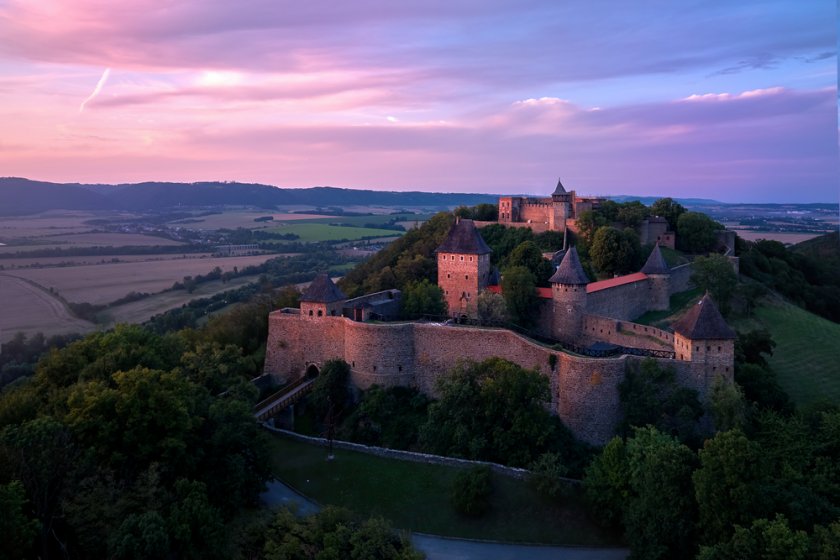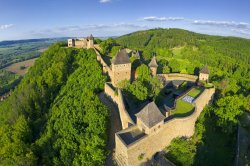Helfštýn Castle
Do you hear a ring? These are hammer blows on the anvil of master blacksmiths, who meet every year at Helfštýn Castle to show their works. They have been presenting their craft here since 1982, and over time, blacksmiths from all over Europe began to flock to an event called Hephaeston (derived from the name of the ancient god of fire and blacksmith Hephaestus). Of the original 18 masters who met here for the first time, Hefaiston currently hosts several hundred blacksmiths from around the world. However, it is no wonder, the atmosphere and charm of the castle is unique.
Information for visitors
Interesting facts Helfštýn Castle
Helfštýn Castle was built in the 13th century thanks to the Silesian nobleman Friduš of Linava, who seized this landscape during his anarchy, after the death of Přemysl Otakar II. On the highest part of the ridge above the river Bečva, he built a small castle with an oval floor plan and abused its strategic position for robbery. King Wenceslas II stopped this when he marched on Moravia in 1287. He conquered the castle and had the robbers executed. Subsequently, Helfštýn was owned by the Kravař family for over a hundred years. In their possession, it underwent spectacular building changes. The Pernštejns later resorted to another extensive reconstruction. The floor plan of the castle was finally given an elongated shape and a very thorough fortification. After the death of Jan of Pernštejn, Helfštýn had to be sold due to family bankruptcy. The new owners became the Ludanics, an aristocratic family from Slovakia. Subsequently, the castle was acquired by the Bruntál family from Vrbno. They demolished the old castle palace with the original Gothic fortifications, and a magnificent Renaissance palace was built in its place. Today, the whole building is just a ruin. After the death of George of Vrbno, who was the last owner of the castle from the Bruntál family, he begged Emperor Ferdinand II. Helfstein Farm Cardinal Francis of Dietrichstein. The subjects could not wait for the worse lords.
Their new master was notorious for the greedy exploitation of his subjects. It is therefore not surprising that in the autumn of 1626 an uprising broke out over the entire Helfstein estate. As a result, and also due to the events of the war, the Helfstein farm was devastated. Despite this, Helfstein was never conquered. Over time, the castle continued to be deserted and served as a temporary refuge for various troops. Only after the Second World War was it included in the category of state castles as an important monument. Reinsurance work and archaeological research were carried out to help clarify his past.
You can visit Helfštýn every day from April to October every day, except Mondays. There are expositions of the mint, archeology and, of course, collections of artistic blacksmithing. For sports-minded visitors, there is a high and low rope park, archery range and for the smallest trampoline and animal hoppers.
So see you in Helfstein at the next year of Hephaiston in August.
Author: Marie Bukovinská







